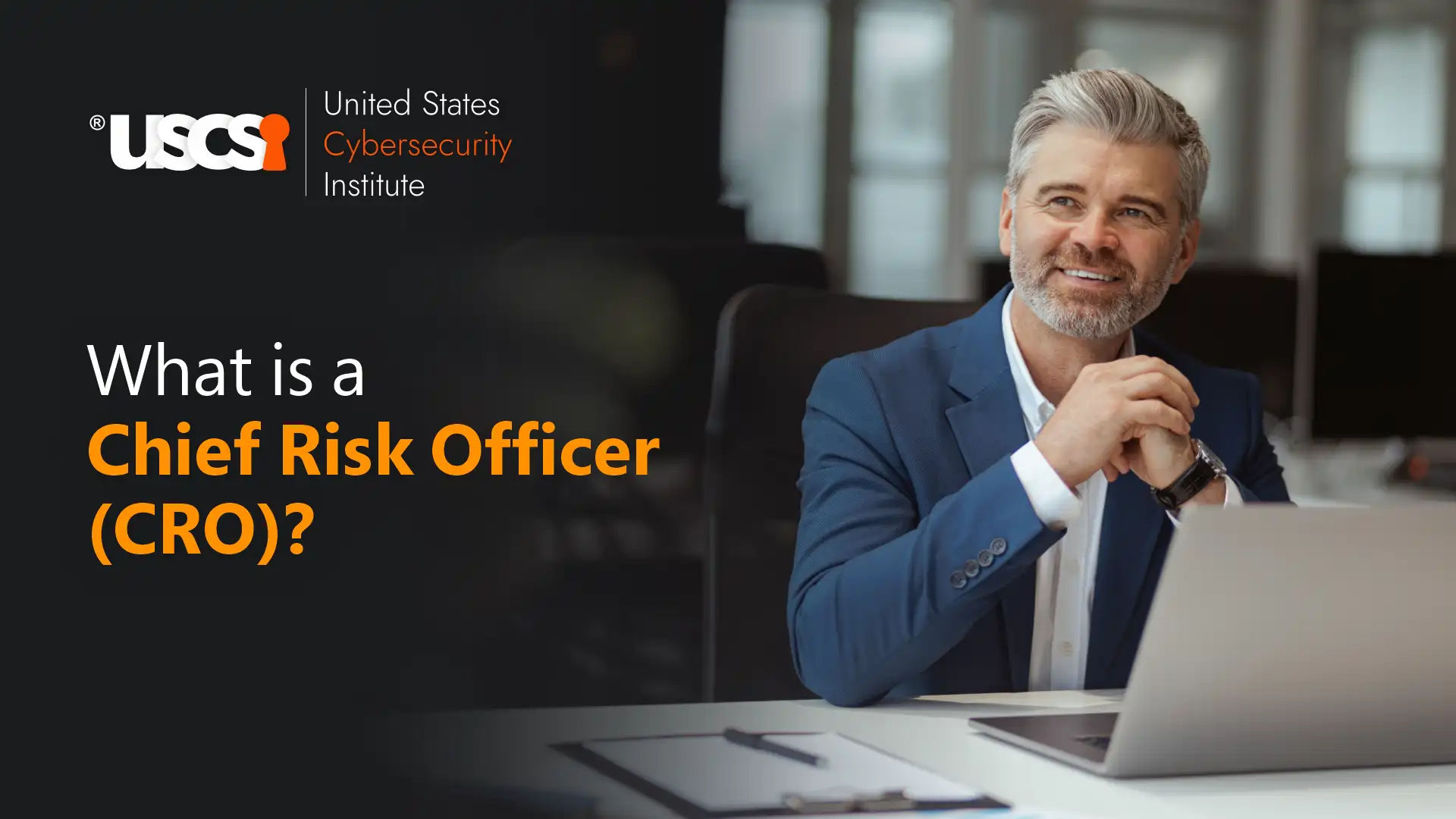

Important Role of the Chief Risk Officer (CRO) in Securing an Organization
The Chief Risk Officer (CRO) enjoys one of the highest roles in cybersecurity and are responsible for maintaining and improving the entire cybersecurity posture of the organization. They manage the risks that could impact their company’s operations, finances, or reputation.
Their primary role is to protect the company from important regulatory as well as technological threats that could affect the organization’s profitability and capital. These cybersecurity experts are often termed as Chief Risk Management Officer as well.
A recent study by Deloitte found that over 90% of leaders see risk management as an important element to achieving strategic goals, yet only 28% of CROs are always present at board‑level meetings.
Though the key area of focus for CROs is compliance risk, they have to look after operational risks and evolving and emerging cyberthreats that their organizations face.
What Makes the Role of CROs Important?
Organizations have always prioritized managing business risks that impact their productivity and profitability. However, only after the introduction of regulatory mandates like the Sarbanes-Oxley Act of 2002 (SOX), organizations begin to formally establish enterprise risk management (ERM) led by dedicated Chief Risk Officer (CRO).
After that, legislations such as the Dodd-Frank Wall Street Reform and Consumer Protection Act of 2010 increased the importance of these cybersecurity professionals within the executive leadership team.

Only 39% of organizations have a dedicated CRO, though 95% view tech-driven risk management as essential. (Source: Worldmetrics.org)
Not just compliance, a major role of CROs also includes overseeing different types of risks from insurance and IT security to financial and internal audits.
Their role becomes particularly important for operational risk management, where they aim to minimize the loss incurred by failed processes, systems, and policies. This might include ensuring smooth business continuity, disaster recovery planning, implementation of strong information security measures, as well as overseeing adherence to regulatory compliance data.
What Different Risks do CROs Manage?
CROs, as the name suggests, are responsible for managing various kinds of risks within an organization. The following are some of the risks they deal with:
- Compliance Risk
Ensure organizations adhere to different rules and regulations. It covers internal operations, external dealings, and sales practices.
- Operational Risk
It addresses any disruptions to business activities caused due to system failures, labor disputes, or vendor instability.
- Reputational Risk
It refers to addressing threats that can damage an organization’s public image, brand value, and stakeholder trust.
- Strategic Risk
It means handling the risks that can prevent the proper execution of risk management, business, or cybersecurity strategies.
- Physical Risk
CROs also address risks and dangers workers face in their workplace, especially in environments with heavy machinery and hazardous conditions.
- Geopolitical Risk
It covers the impact of political instability or natural disasters on global operations and ensures employee safety.
- IT Risk
For organizations operating in this digital world, identifying and mitigating cyberthreats, data breaches, and addressing vulnerabilities becomes very important.
- Financial Risk
Most importantly, CROs also manage the exposure to market shifts, liquidity issues, and credit risk, and conduct financial stress testing to eliminate any kind of financial risk that can occur.

These risks can originate from any business function and spread across divisions. Therefore, CROs are required to collaborate with other senior professionals, security teams, and experts from other departments to identify and address the issues.
Key Responsibilities of the Chief Risk Officer
Some of the important and common tasks that Chief Risk Officers look after are:
- Threat mitigation strategies
They develop and implement risk management strategies to mitigate the various threats we discussed above.
- Track and monitor risks
They keep a track of how their risk mitigation strategies are working and measure the key risk indicators. They report their findings to higher-level executives.
- Information assurance strategies
CROs have to develop and execute information assurance strategies to manage and protect against various kinds of risks.
- Risk evaluation
They evaluate the potential risks that can arise because of system failures or employee errors, leading to the disruption of business operations. Upon proper evaluation, they develop strategies to minimize those risks.
- Risk management
CROs also determine the risk appetite of the organization and how much risk it can bear.
- Funding and budgeting
They look after the funding and budgeting of their risk management projects. This includes determining the cost-effectiveness of various risk strategies and how much funding is required for the same.
A joint EY & IIF survey shows 49% of CROs plan to prioritize AI for data analysis and operational automation over the next three years, though 41% face budget constraints

The Chief Risk Officers also perform due diligence and risk assessments during business deals, mergers, and acquisitions. For example, they will evaluate the potential risks of a target company and then determine the strength of its risk management practices.
Skills and Qualifications of CROs
Chief Risk Officer is a senior-level position, and it requires a wide range of skillset along with strategic thinking, analytical skills, and a strong understanding of various risk management frameworks.
Being a successful CRO demands having expertise in compliance, finance, IT security, and operational risk. You need to have strong leadership, decision-making, and communication skills to succeed in this cybersecurity career path.
Having advanced degrees in finance, business, law, and risk management, along with relevant cybersecurity certifications such as Financial Risk Manager or Certified Risk Manager, can boost your career prospects.
Thankfully, there are numerous chief risk officer courses and certifications (as listed below) that you can leverage to learn the required skills and knowledge to grow as a successful CRO.
- Chief Risk Officer certificate from Carnegie Mellon University's Heinz College.
- Certified Senior Cybersecurity Specialist (CSCS™) by USCSI®
- Master's program in business analytics and risk management from Johns Hopkins Carey Business School.
- Enterprise Risk Management graduate certificate from Boston University's Metropolitan College.
- Certified Chief Risk Officer certification by the American Institute of Business Management.
- Professional Risk Manager certificate offered by the Professional Risk Managers' International Association.
For their skills and expertise, the Chief Risk Management Officers are paid handsomely, and their annual average salary can go as high as $281,828 in the US. (Source: salary.com)
Summing up!
The role of chief risk management is highly important to manage risks efficiently and mitigate any kind of risk their organizations face promptly. They design, implement, and monitor their risk management strategies for maximum result and hence ensure their organizations adhere to various security regulations and standards.
This is one of the top positions organizations have, and to climb this role, you need to have enough skills, knowledge, and experience to perform your duties efficiently. With relevant courses and certifications, you can also enhance your credibility and employability for this role across various industries.





